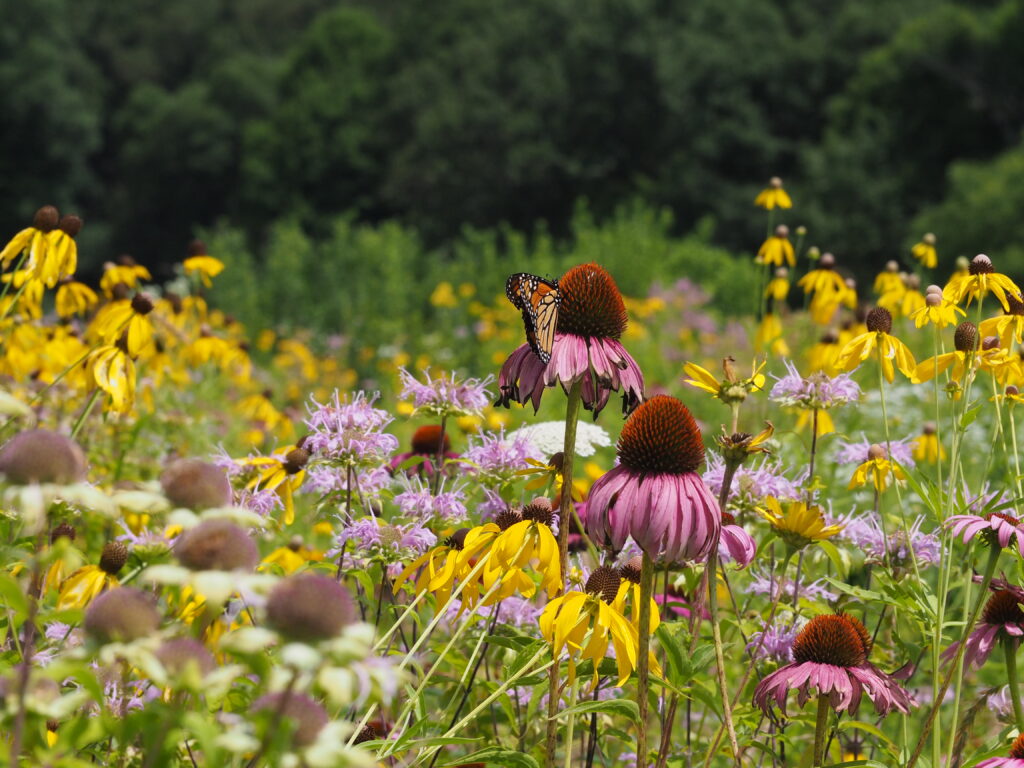In the Midwest, most large-scale native pollinator habitat plantings are created with seed mixes. It is understood that plant diversity is a requirement for pollinators and the foundation of ecological resilience, but it can be a complicated and consequential challenge to select the best mix for any given site. After all, what you plant when you start a project determines the results for years to come.
Here’s a list of questions I ask myself when reviewing a mix for the tallgrass prairie systems common in the Midwest. In most cases, there isn’t a “correct” answer to each of these questions, but thinking through these considerations can help you explore which elements in a mix may need to be adjusted prior to purchase:
1. How many species are in the mix?
2. Are the species regionally appropriate?
3. Are the species adapted to the soil moisture conditions on site?
4. Are the species adapted to sun conditions on site?
5. Are there at least three (ideally, more!) wildflower species blooming in each part of the growing season (early, mid, and late?)
6. Are there native sedge and grass species, including some bunchgrasses?
7. Are butterfly host plants included (e.g., milkweeds for monarch butterflies)?
8. Are annuals, biennials, and short- and long-lived perennials included?
9. Is there a wide diversity of native plants from different plant families (e.g., asters, mints, milkweeds, legumes, roses, etc.)?
10. Are all the “functional groups” represented (e.g., warm-season grasses, cool-season grasses, sedges or rushes, legume and non-legume wildflowers)?
11. Are there any species dominating the mix (i.e., species that have an unusually high seeding rate that could outcompete others)?
12. What is the ratio of wildflowers to grasses (based on seeds/square foot)?
13. What is the overall seeding rate?
14. Does the cost match my budget?
15. Are the species in the mix available to buy? If not, what substitute species would be appropriate?

Hopefully this list of considerations will be useful as a way to visualize how a particular seed mix may perform, and whether your mix will help you achieve your conservation goals. There’s inherent optimism in creating mixes with affection and intention, knowing that once established, your habitat will serve as a powerful nature-based climate and biodiversity solution. Enjoy the process!
Author:
Karin Joela
Pollinator Conservation Planner & NRCS Partner Biologist
The Xerces Society
Additional Resources:
Regional Pollinator-Friendly Plant Lists
Establishing Pollinator Meadows from Seed
Organic Site Preparation Methods: A Comparative Overview





